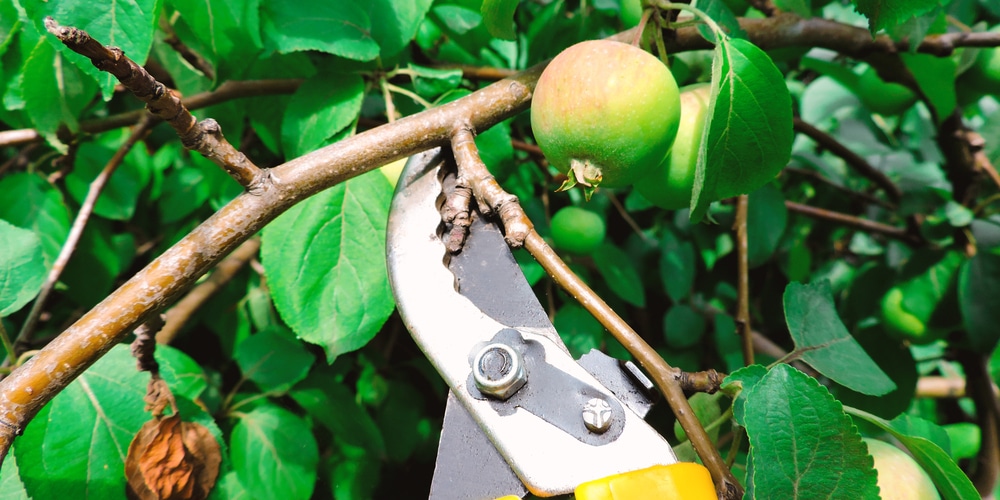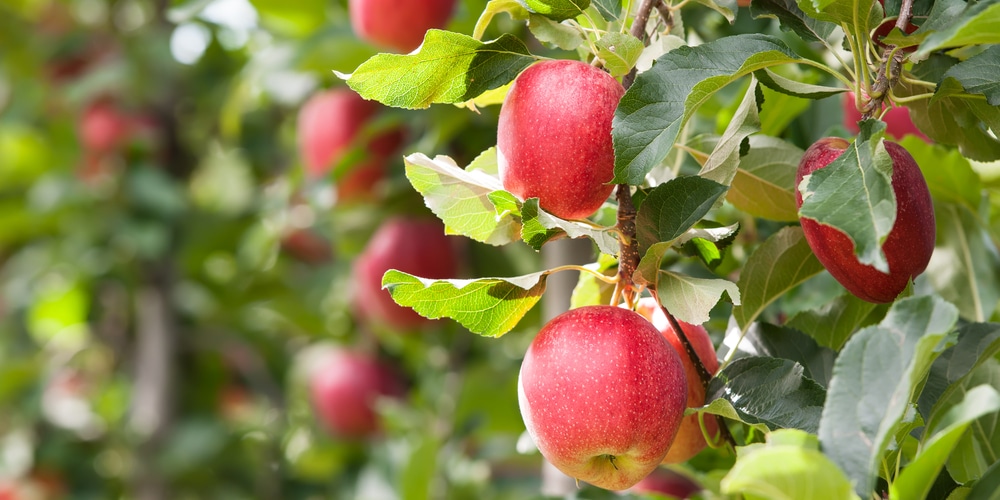How does it sound to you to get a consistent supply of apples for free? Well, if you like the idea, don’t worry. Growing an apple tree is not as complicated as you think. Plus, these trees produce stunning white blooms that will make your garden more attractive during the spring.
However, you will have to look out for pests and diseases, regardless of where you decide to plant your tree. Indeed, just like humans like to munch on these delicious and crunchy fruits, insects and other animals love these plants. To prevent severe damage to your trees, you will have to spray your plants with pesticides.
Quick Answer:
Prune your apple trees between January and February in New York state. Indeed, you’ll want to prune your tree early enough for it to recover before spring arrives, but not too early to expose it to damaging frosts or low temperatures.
But besides giving proper care to your tree, you must ensure the variety you pick is suitable for your region. You probably know that apple trees are one of the favorite options for many homeowners in New York State.

After all, the state is home to more than 700 apple orchards that produce more than 6,000 tons of apples each year, making New York state the second-largest producer of these fruits in the United States. There are plenty of varieties that grow well in New York (more on that later). But what if we told you that regular (and correct) pruning is what makes the real difference between a rich yield and an unhealthy one?
If that surprises you, don’t worry. In this “When to Prune Apple Trees in NY state” essential guide, we go over what we think you must know to grow healthy apple trees in your garden.
When to Prune Apple Trees in NY State
The best time of the year to prune fruit trees is in winter. At this time of the year, these plants are dormant and don’t produce new growth, which allows them plenty of time to recover from the stress.
Prune your apple trees between January and February in New York state. Indeed, you’ll want to prune your tree early enough for it to recover before spring arrives, but not too early to expose it to damaging frosts or low temperatures. Also, prune your apple tree regularly (at least once per year) but not too abundantly: too much shock might cause irreversible damage to your apple tree.
Provide your apple trees with moist soil and plenty of sunlight during the day to get the best results. Consider adding some mulch around the base of the tree to increase water retention and regulate the temperature of the ground. While New York’s state cold winters and hot summers are ideal for growing apples, you’ll still want to protect your plant’s roots from frost or excessive warmth.
Which Varieties of Apple Trees Should You Grow in NY State?
The good thing about adding an apple tree to your NY state garden is that you can choose from a wide selection of varieties. While it could be overwhelming to go through all of the species that work for your region, picking one doesn’t have to be complicated. Here, we leave you with our favorite apple tree varieties to grow in New York State.
Pink Lady
Pink lady is a graceful apple tree that produces large-sized fruits with blushing pink skin and a crisp, sweet flavor. These trees are perfect for New York state. If you plant them where they will receive adequate sunlight, these plants will give you plenty of fruits. Don’t forget to keep the soil moist for best results. Also, add pollinators around them to boost fruit production.
Fuji
The Fuji apple tree is the ideal fruit tree if you like the thought of getting rich harvests. Its crispy, juicy, and sweet fruits are delicious when eaten fresh. Plus, these trees don’t require much attention from your side. However, you will have to wait at least three years before getting consistent harvests from your trees.
Honey Crisp
Honey crisp apple trees are perfect if you don’t have much space in your garden: they will only grow between 14 to 18 feet in height and reach maturity at around 12 feet in width.
You will have to locate your tree under full sun. Plus, you might have to amend your soil: honey crisp trees prefer pH between 6.0 and 7.0. Don’t forget to water your tree regularly, especially when the summer arrives.
Related Article: Zone 6 Fruit Trees: A Complete List
